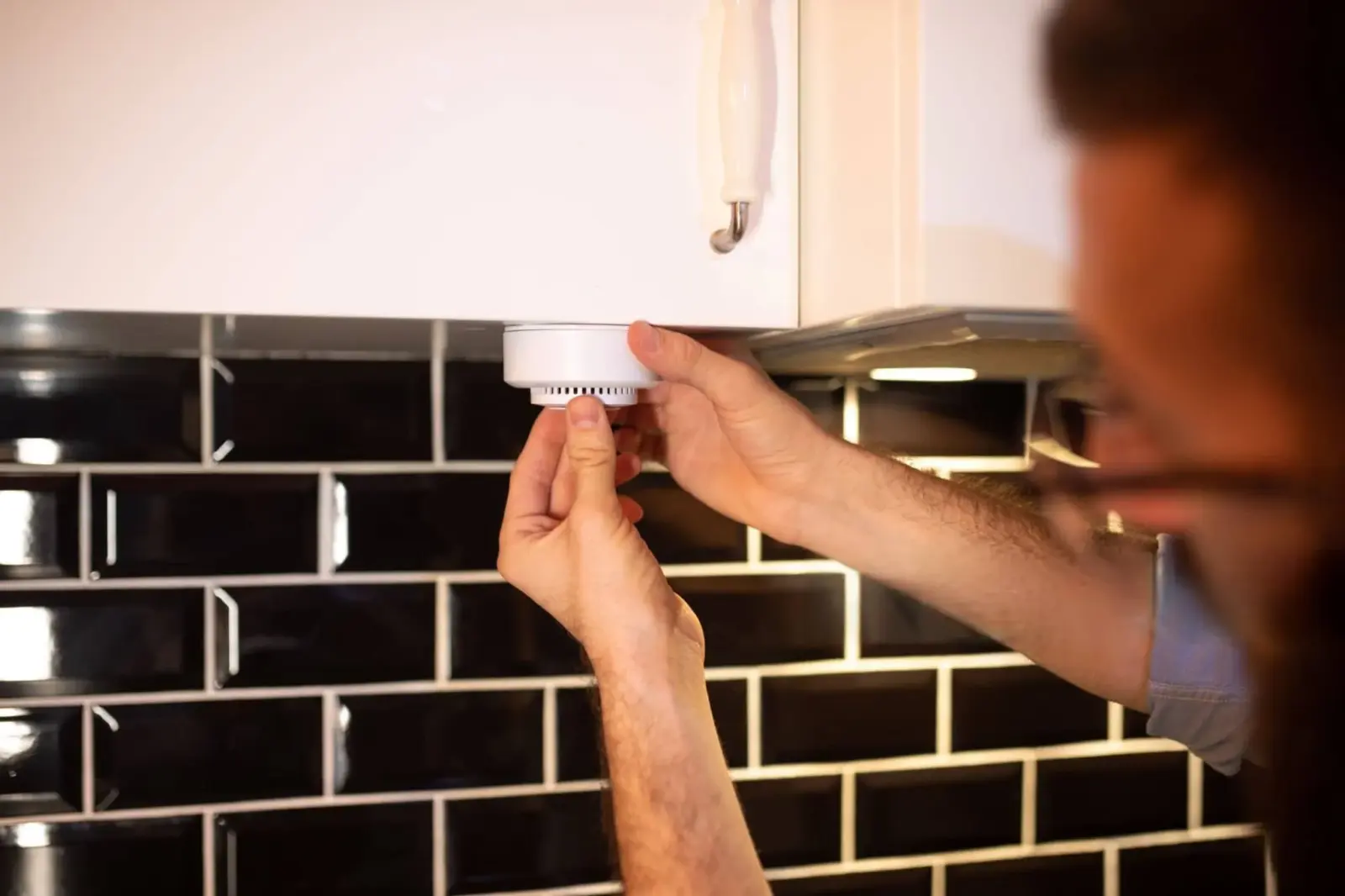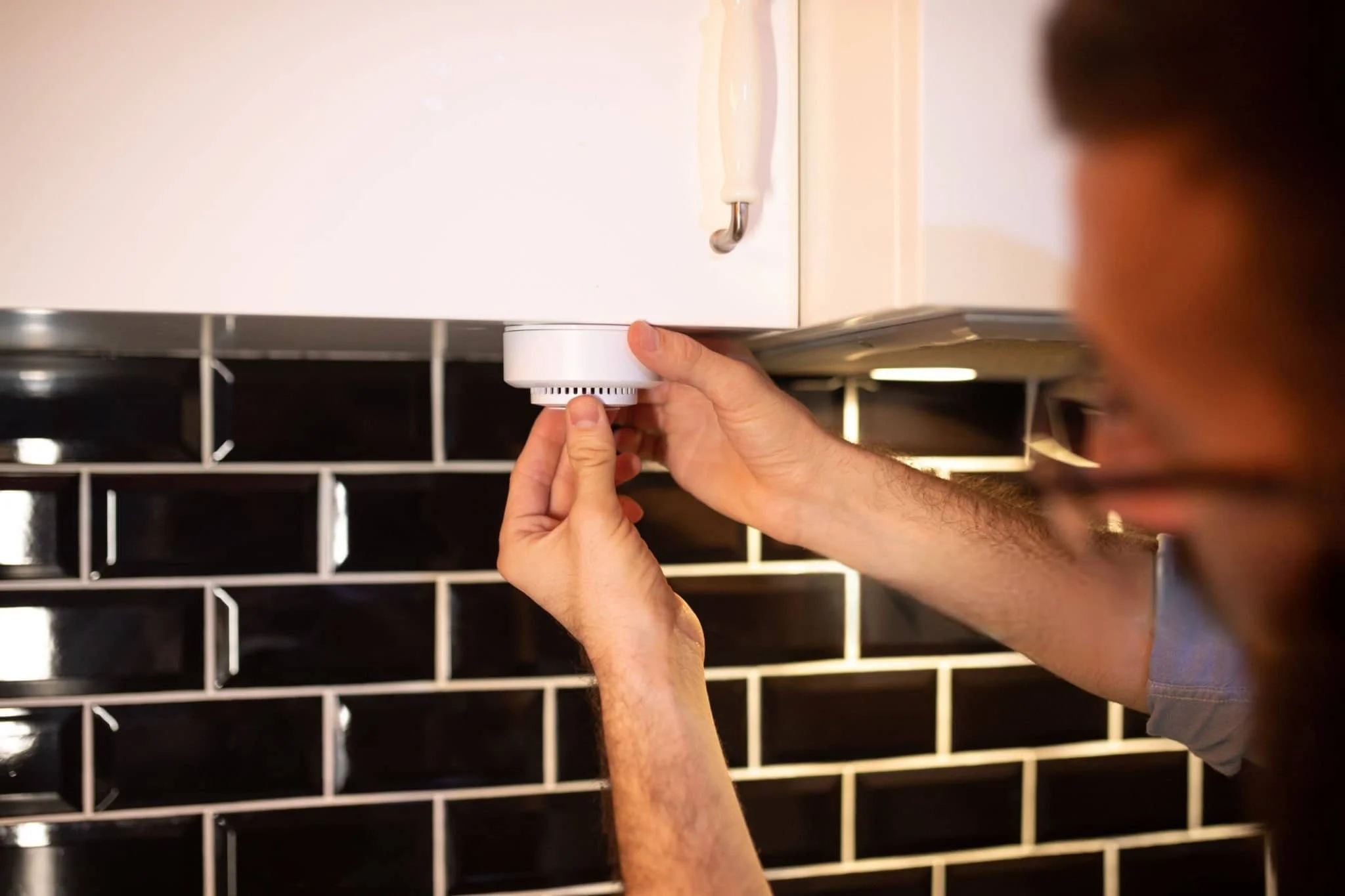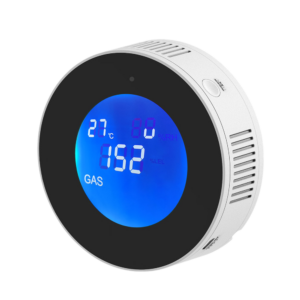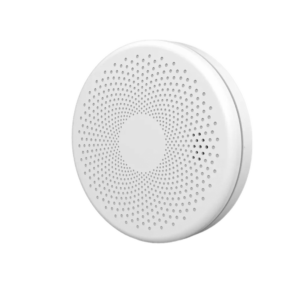De flesta husägare känner sig trygga när ett kolmonoxidlarm (CO-larm) har installerats.
Men här är sanningen:Ett CO-larm kan inte upptäcka läckor av naturgas eller propan– och den klyftan kan göra stor skillnad för hemsäkerheten.
This guide breaks down what each type of alarm really does, why gas leaks are still dangerous even with a CO detector, and how to build a full-coverage protection system for your home.

Vad kolmonoxidlarm faktiskt upptäcker
Kolmonoxid är enluktfri, färglös och smaklös gasproduced by incomplete combustion — from furnaces, gas stoves, fireplaces, or car engines. Because it gives no warning smell, a CO alarm is essential for detecting it early.
CO alarms use electrochemical sensors that react only to carbon monoxide molecules. That means they’reblind för naturgas, propan eller butan— gaser som huvudsakligen består av metan eller kolväten.
If you’ve ever noticed a strange fuel or “gasoline-like” odor, that’s not CO — it’s likelymetan blandad med ett luktämne (merkaptan)tillsatt av energibolag för att hjälpa dig att snabbt känna lukten av läckor.
Kan ett CO-larm detektera naturgas eller propan?
Kort sagt:no.
Ett kolmonoxidlarm kan inte detektera naturgas, propan eller andra brännbara gaser.
Här är varför:
| Larmtyp | Upptäcker | Vanliga gaser | Ändamål |
|---|---|---|---|
| CO-larm | Kolmonoxid | CO | Varnar för förgiftning från förbränningsbiprodukter |
| Gasläckagedetektor | Metan, propan, butan | CH₄, C₃H₈ | Varnar för bränsleläckor före tändning |
| Brandvarnare | Rökpartiklar | — | Varnar för brand eller överhettning |
Användning av CO-detektorer och gasdetektorerolika sensorteknologier.
CO-larm är beroende av kemiska reaktioner i sina sensorplattor, medan gasläckagelarm är beroende avhalvledarsensorer (MQ-serien)som reagerar på brännbara gaser i luften.
Så, om ditt hem användernaturgas, propanvärmare eller gasdrivna varmvattenberedare, du behöverbåde— ett CO-larmandett särskilt gasläckagelarm.
Varför gasläckor fortfarande är farliga – även om du har en CO-varnare
Gas leaks don’t just waste energy. They can cause fires, explosions, or even asphyxiation if the gas displaces oxygen in enclosed spaces.
Vanliga läckagepunkter inkluderar:
- Kök(gasspisar, ugnar)
- Källare eller garage(ugnar, varmvattenberedare)
- Tvättstuga(gasdrivna torktumlare)
- Grovkök(rör och ventiler)
Utmaningen?
Dessa utrymmen oftahar inga CO-larm installerade— vilket lämnar en farlig blind fläck.
Det är därsmarta WiFi-gasdetektorerkomma in.
De övervakar kontinuerligt luften för metan eller propan, och om nivåerna stiger skickar de utomedelbara appaviseringaräven när du är borta.
Lämna inte en blind fläck:CO-larm känner inte av bränslegaser. AWiFi-gasdetektorkan varna dig tidigt – även när du är borta.
Vad är skillnaden mellan CO-, rök- och gasläckagelarm?
It’s easy to confuse them, since they’re often installed side by side. But each has a distinct purpose.
| Typ av larm | Upptäcker | Typisk plats | Exempelenhet |
|---|---|---|---|
| Brandvarnare | Eld- och rökpartiklar | Hallar, sovrum | Rök- och kolmonoxiddetektor – GasNet-CM |
| CO-larm | Kolmonoxid | Nära sovplatser | GasNet-CM Dubbelsensor |
| Gasläckagelarm | Metan, propan | Kök, ugn eller källare | WiFi-naturgasdetektor – GasNet-S4 |
Varje typ täcker en annan fara.
Och när den integreras i ensmart hemsystem, they can all connect to your phone or smart speaker — giving you real-time updates no matter where you are.
Bästa sättet att skydda ditt hem — Använd båda typerna tillsammans
De säkraste användningsområdena för hemlagerskydd.
- Rök- och CO-detektor(somGasNet-CM) skyddar mot brand och kolmonoxidbildning.
- WiFi-gasläckagedetektor(somGasNet-S4) upptäcker metan- eller propanläckor före antändning.
- Tillsammans tillhandahåller deSmart övervakning dygnet runt— och kan till och med stänga av gasförsörjningen automatiskt när den kombineras med ett smart ventilsystem.
Var man ska placera gasläckagelarm i ditt hem
Rätt placering gör hela skillnaden:
- Naturgas (metan)stiger — installera detektorernära taketoch nära gaskällor.
- Propanhandfat — installera detektorernära golveti områden som använder gasol.
- Undvik hörn eller fläckar med dålig luftcirkulation.
- Kontrollera batterierna varje månad och byt ut enheterna vart 5–7 år allt eftersom sensorerna åldras.
För mer detaljerade placeringsregler, seNFPA 720-standarden för detektering av kolmonoxid och brännbara gaser.
Vanliga frågor: Snabba svar om gasläckage- och CO-larm
Kan ett kolmonoxidlarm upptäcka gasläckage?
Nej. Kolmonoxidlarm detekterar endast CO som produceras genom ofullständig förbränning.
De görnotkänner av naturgas, propan eller andra bränslegaser.
För de behöver du endedikerat gasläckagelarmutformade för att detektera metan eller propan innan fara uppstår.
Upptäcker brandlarm gasläckor?
Nej. Brandlarm är tillverkade för att detektera rökpartiklar och värme, inte brännbar gas.
Om ditt hem använder gasspisar, värmare eller värmepannor är det bäst att installera engasläckagedetektornära dessa apparater för tidig varning.
Vilket är det bästa gasläckagelarmet för hemmabruk?
Leta efter enWiFi-aktiverad naturgasdetektorsom kan känna av både metan och propan och skicka telefonaviseringar i realtid.
En modell som denGasNet-S4 WiFi-naturgasdetektorerbjuder omedelbara aviseringar och pålitlig täckning för kök, källare och tvättstugor.
Behöver jag både CO- och gasdetektorer?
Ja. Kolmonoxid och gaser är helt olika faror.
A CO alarm protects against carbon monoxide poisoning, while a gas leak alarm prevents fire or explosion risks from methane or propane leaks.
Genom att använda båda får dufullständigt hemskydd.
Var ska jag installera gasläckagelarm?
Fornaturgas (metan), montera larmethögt upp på väggen eller nära taket, eftersom metan stiger.
Forpropan (LPG), placera denlågt på väggen eller nära golvet, eftersom propan sjunker.
Fokusera på kök, tvättstugor och ugnsområden där läckor är mest sannolikt att uppstå.
Kontrollera och testa detektorerna varje månad för bästa prestanda.
Håll dig skyddad – lita inte på en enda larmtyp
Even if your CO alarm is working perfectly, it can’t sense a gas leak before it becomes dangerous.
Installera endedikerad WiFi-gasdetektortillsammans med dina CO- och rökdetektorer ger det fullspektrumskydd – och sinnesro.
💡Proffstips:Kontrollera alltid din lokala elleverantörssäkerhetsriktlinjer för naturgasför korrekt ventilation och läckagehantering.
Protect your home from both gas and carbon monoxide leaks with our dual smart detector set. Enjoyup to 10% offfor a limited time — peace of mind has never been this affordable.
Shop the Black Friday Bundle →

